
Category: Art Conservation
Student Blog: Archaeological Conservation Centre of Rome
August 31, 2025 Written by Luca Denegre, WUDPAC Class of 2026 | Photos courtesy of Luca Denegre and Cecelia Denegre
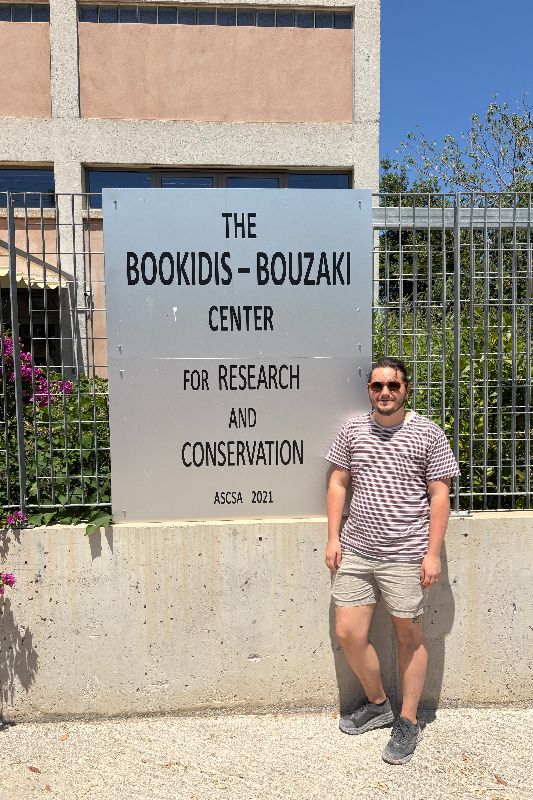
This summer, I spent two months in Greece in the town of Ancient Corinth, or Αρχαία Κόρινθος. I interned with the Archaeological Conservation Centre of Rome (CCA Roma) on a conservation project in collaboration with the American School for Classical Studies in Athens (ASCSA).
The town surrounds the archeological site of Ancient Corinth, which was one of the largest and most important cities in Ancient Greece. It was later demolished by the Romans, who built a new city in its place. Excavation at the site was begun 1896 by ASCSA and continues today, with large parts of the ancient city uncovered. I worked with CCA Roma on-site and in the nearby Bookidis - Bouzaki Center for Research and Conservation, or, the "apothiki" (ἀποθήκη). They are primarily focused on the conservation of Roman-era frescoes from the 1st Century BC, previously excavated from near the Corinthian theatre, for future installation in the Archaeological Museum of Ancient Corinth. CCA Roma is a conservation firm based in Italy, headed by Roberto Nardi. The CCA undertake a range of projects from educational programs in preventive conservation to long term, major conservation of monuments. Over 35 years, CCA Roma has worked with international institutions to safeguard and conserve global cultural heritage, including ICCROM, UNESCO, and the Getty.
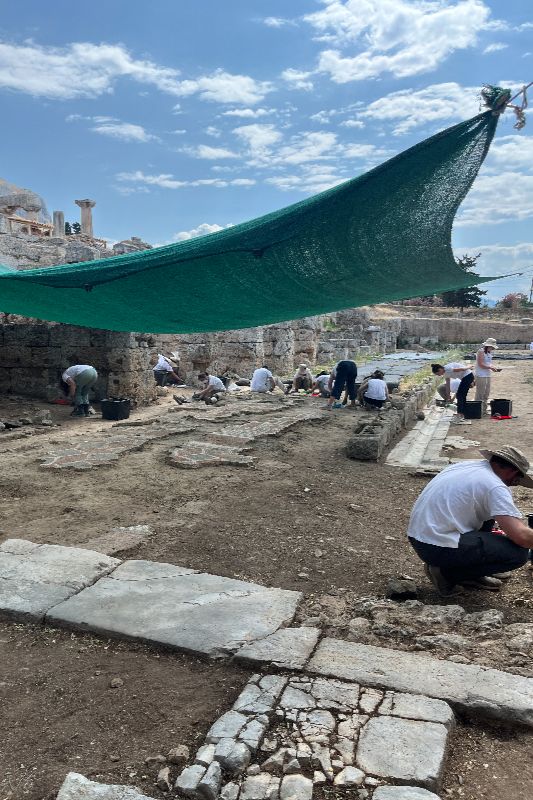
My time in Ancient Corinth and introduction to the site began in the “North Market”, working with a group of enthusiastic American undergraduate students from Grove City College, who were participating in a summer training program run by CCA Roma on the conservation of Mosaics. The stalls of the Roman era “North Market” surround a center square paved with geometric mosaics made of stone and terra cotta tesserae. We helped prepared these mosaics for reburial under vapor permeable fabric for long term preventive care. This including removing the previous black landscaping fabric and weeds from market stalls and mosaics, condition reporting and mapping, and wet cleaning. I also assisted with photography in order to print a to-scale reproduction of the mosaics which will be displayed in-situ after reburial. Talking with curious visitors and residents was also very rewarding - many residents had never seen the mosaics uncovered and were excited about the project.
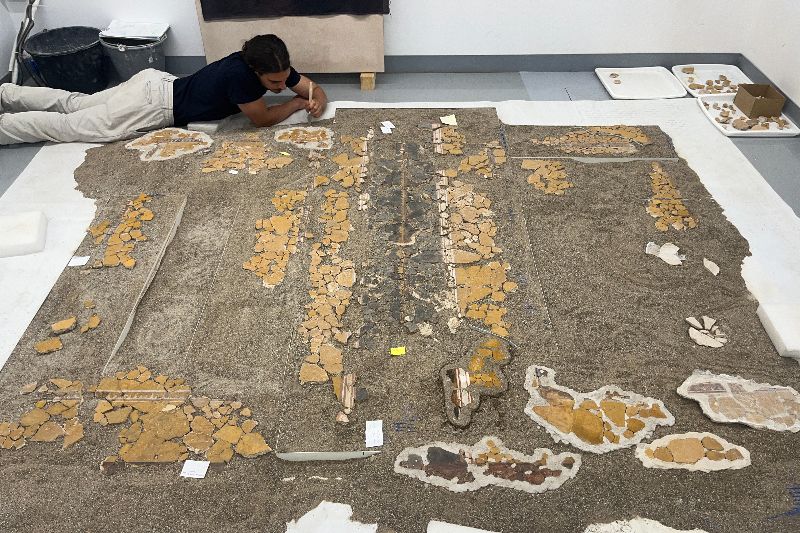
The other main project for the summer was the “yellow pannello,” a large fragmentary fresco. The CCA team had laid out fragment groupings in a sandbox, reconstructing the overall design of the wall painting. However, the original dimensions were unknown. The team was considering how to display the fresco to both tell the story of the conservation process and allow for easy rearrangement in the future if more information came to light. The proposed solution was display in a sandbox instead of attached to a panel, with 3D printed trays to hold fragment groupings in place without a more interventive treatment. To 3D print the trays, we modeled the irregular back surfaces of each fragment grouping using photogrammetry. Photogrammetry software is fairly accessible and can construct 3D models of objects using many overlapping images taken by a normal camera. To prepare for photography, we first applied a weak, temporary lime mortar around each fragment grouping in the sandbox before facing them with cotton gauze. This allowed the groupings to be flipped over and moved for documentation while the carefully placed fragments remained in alignment.
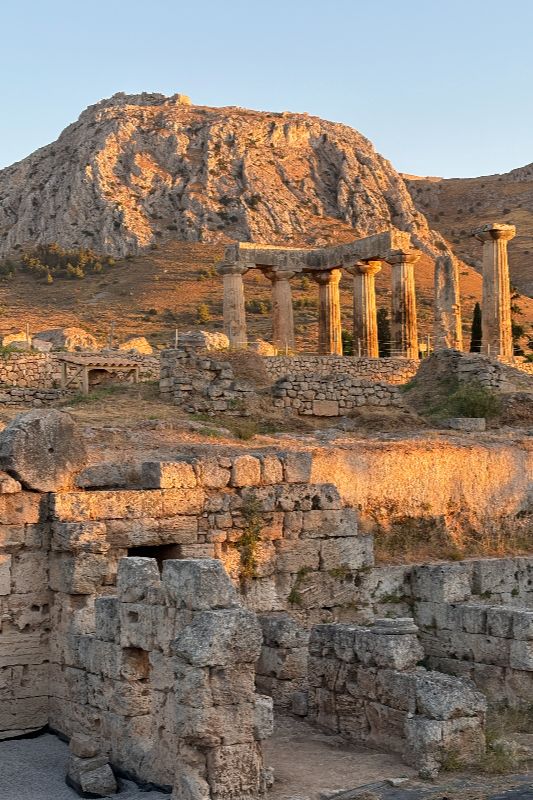
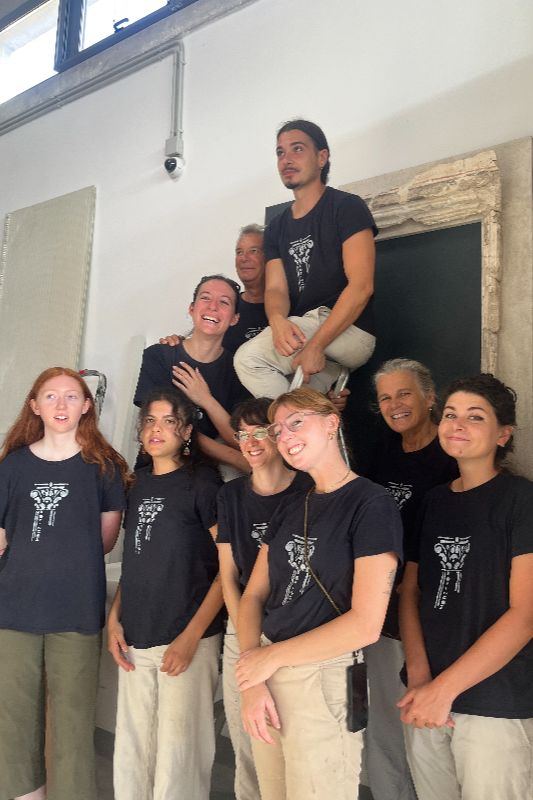
Though my 8-week internship was only a snapshot of this huge, long-term project, I’m thrilled to have had the opportunity to work with these archeological materials in-situ to their excavation context, and with the CCA team. I saw many stages of fresco conservation, gained experience with new materials, brushed up on my Italian, and made some really great friends.
I’m now back in the US, prepping to moving to NYC where I will be splitting my third-year internship between the Cooper Hewitt Smithsonian Design Museum and the Brooklyn Museum. For my third year, I wanted to work with both contemporary and ancient objects, so NYC will definitely be a big contrast from my summer, from ancient frescoes in small town to contemporary materials and disintegrating plastics in a huge city!
